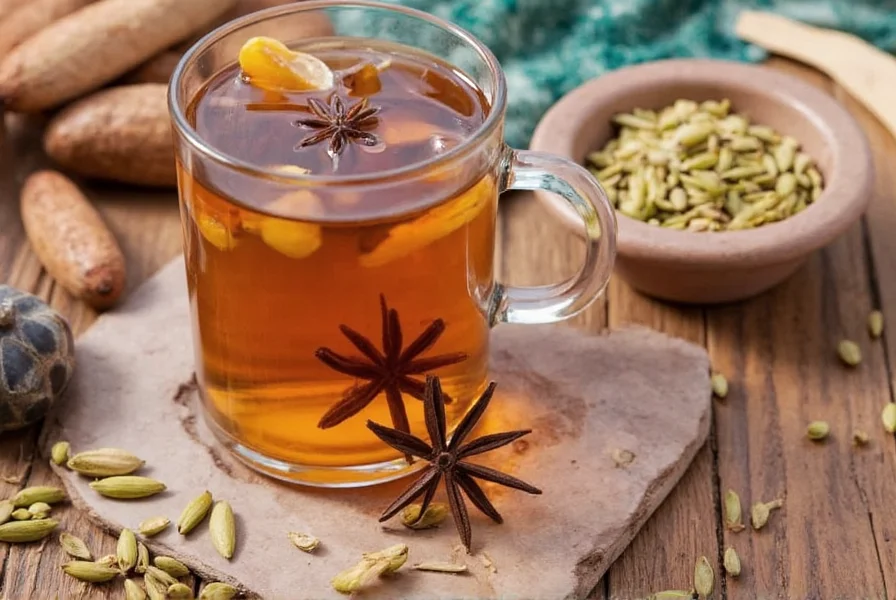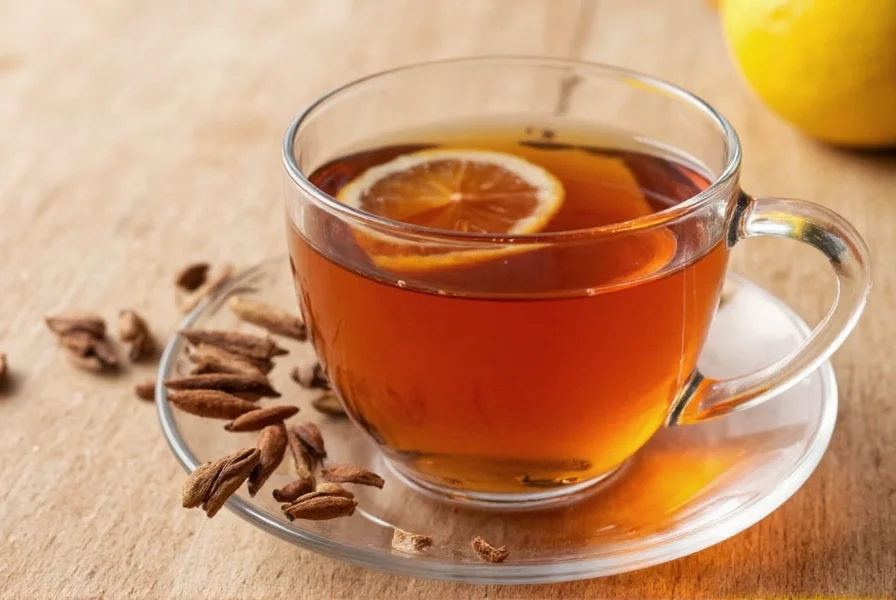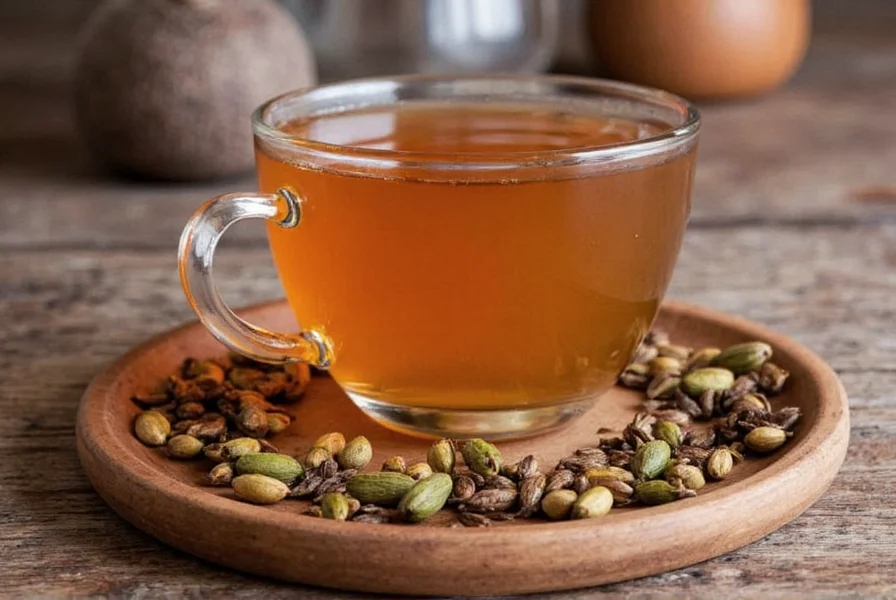Cardamom-spiced tea has captivated palates across continents for centuries, evolving from ancient spice routes to modern teacups. This beloved beverage represents more than just a drink—it's a cultural artifact with deep roots in Middle Eastern hospitality traditions and Scandinavian coffee culture. Understanding how to make cardamom-spiced tea properly requires appreciating both its historical context and the nuanced flavor profile that makes it distinctive.
The Rich History of Cardamom in Tea Culture
Cardamom's journey into tea culture began along ancient spice routes connecting India to the Middle East. Historical records show cardamom was among the most valuable spices traded along these routes, often worth more than its weight in gold. In Arabian Peninsula cultures, cardamom-spiced tea became integral to hospitality rituals, where serving this fragrant beverage signaled respect and welcome to guests.
Interestingly, Sweden developed its own unique relationship with cardamom tea in the 19th century, making it the world's second-largest consumer of cardamom per capita after Saudi Arabia. This Scandinavian adoption demonstrates cardamom's remarkable cultural adaptability. When exploring cardamom tea cultural significance, we see how one spice transcended geographical boundaries to become a global phenomenon.
Green Cardamom vs Black Cardamom: Understanding the Difference
Not all cardamom is created equal when making spiced tea. Two primary varieties exist:
| Cardamom Type | Flavor Profile | Best For |
|---|---|---|
| Green Cardamom | Citrusy, floral, slightly sweet | Most tea preparations, especially with black or green tea |
| Black Cardamom | Smoky, camphorous, more intense | Robust chai blends, savory dishes |
For authentic traditional cardamom-spiced tea recipe preparations, green cardamom (Elettaria cardamomum) remains the preferred choice. Its delicate flavor complements tea leaves without overwhelming them. Professional tea makers recommend using whole pods rather than pre-ground cardamom to preserve the volatile oils that deliver its distinctive aroma. When preparing cardamom tea preparation method, lightly crushing the pods before brewing releases maximum flavor.

Mastering the Perfect Cardamom-Spiced Tea
Creating an exceptional cup requires attention to detail. The ideal cardamom tea flavor profile balances the tea's natural bitterness with cardamom's citrusy warmth. Here's a refined preparation method:
- Use fresh, high-quality tea leaves (Assam or Ceylon black tea works best)
- Add 2-3 whole green cardamom pods per cup, lightly crushed
- Bring water to 200°F (93°C)—never boiling, which scalds delicate cardamom oils
- Steep for 3-5 minutes (longer for stronger flavor)
- Optional: Add a touch of honey or sugar, but many purists enjoy it plain
This authentic middle eastern cardamom tea technique preserves the nuanced flavors that make this beverage special. For those exploring how to make cardamom-spiced tea with variations, consider adding a cinnamon stick or clove for complexity, but remember that traditional preparations feature cardamom as the star.
Health Aspects of Cardamom-Spiced Tea
While not a medical treatment, cardamom-spiced tea offers potential wellness benefits supported by emerging research. Cardamom contains compounds like cineole and limonene that may support digestive health. A 2022 review in the Journal of Ethnopharmacology noted cardamom's traditional use for digestive comfort has some scientific backing.
When discussing cardamom tea health benefits, it's important to maintain appropriate perspective. The beverage contributes to hydration and provides antioxidants from both the tea and cardamom. However, claims about dramatic health transformations should be avoided—moderation and realistic expectations are key. The primary enjoyment of cardamom tea remains its exquisite flavor and cultural significance.

Cultural Variations Across the Globe
Cardamom-spiced tea manifests differently across cultures:
- Arabian Peninsula: Qahwa, served in small cups without handles, often sweetened heavily with dates
- India: Masala chai incorporating cardamom among other spices, typically with milk
- Scandinavia: Cardamom tea often accompanies pastries, reflecting Sweden's unique adoption of the spice
- East Africa: Chai ya kahawa, blending cardamom with cloves and ginger
These regional interpretations showcase the spice's versatility. Understanding these differences helps appreciate cardamom tea cultural significance beyond a simple beverage—it's a social ritual, a symbol of hospitality, and a connection to heritage.
Modern Interpretations and Pairing Suggestions
Contemporary tea enthusiasts have expanded traditional preparations while respecting core principles. For those experimenting with modern variations of cardamom-spiced tea, consider these pairings:
- With citrus desserts—the tea's floral notes complement lemon or orange flavors
- Alongside mild cheeses—the spice cuts through richness without overwhelming
- As a palate cleanser between courses in multi-dish meals
- Cold-brewed version for summer—a refreshing alternative to iced tea
When exploring cardamom tea preparation method variations, remember that the essence lies in cardamom's delicate balance. Overpowering it with too many additional ingredients defeats the purpose of this elegant beverage.
Perfecting Your Cardamom Tea Experience
Seasoned tea drinkers recommend these final tips for optimal enjoyment:
- Store cardamom pods in an airtight container away from light to preserve volatile oils
- Crush pods just before brewing for maximum aroma release
- Experiment with pod-to-tea ratios to match your personal preference
- Serve in pre-warmed cups to maintain ideal drinking temperature
- Allow the tea to cool slightly—this enhances flavor perception
Whether you're exploring traditional cardamom-spiced tea recipe methods or creating your own variation, the key lies in respecting cardamom's delicate nature. This isn't a spice that benefits from heavy-handed application; rather, it shines when allowed to complement rather than dominate.











 浙公网安备
33010002000092号
浙公网安备
33010002000092号 浙B2-20120091-4
浙B2-20120091-4